About Golok Part II
The nomads of Golok have maintained their lifestyle for hundreds of years. While recent decades have brought changes, we discovered that the essence of this ancient tradition - at once beautifully simple and profoundly complex - remains powerful in the land and in the hearts of its people.

The verdant mountains and valleys of the Golok region are a result of frequent rainstorms which occur during the spring and summer months. These storms are quite dramatic, including deafening thunder-claps, lightning strikes, large hailstones and, finally, vibrant rainbows.
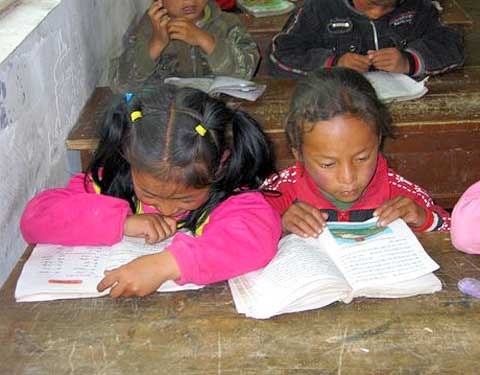
These girls attend Jime Primary School in Gabde County. In general, each village in Golok has a Tibetan primary school. There are public primary, middle, and high schools, roughly parallel to the US setup. Chinese students have a separate educational system.
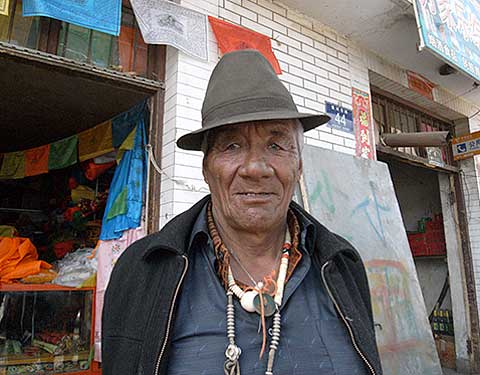
They thrive in an extreme environment and value strong ties to family, community and Buddhist tradition. The people of Golok are strong, resilient and very compassionate. This gentleman was standing in front of a prayer-flag shop wearing his prayer beads (mala) around his neck.
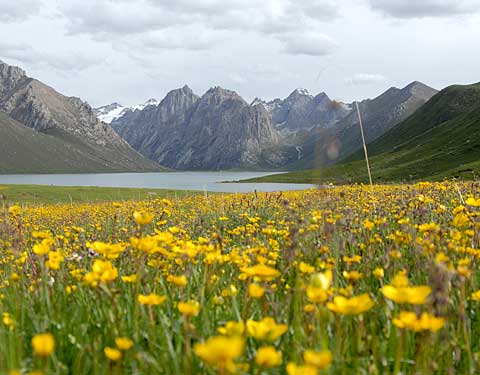
During the spring and summer months on the high Golok plateau, one is surrounded bybreathtaking sceneries. Flowers of all shapes and colors adorn the meadows and surrounding foothills as far as the eye can see.
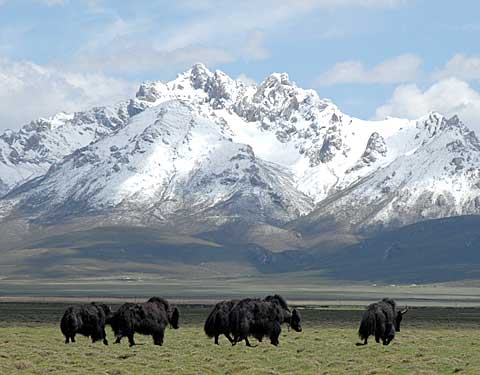
Yaks are seen grazing on tender blades of grass beneath the snow-capped peaks of the Amnyemachen range. Tibet's mountains and "permanent" ice fields are the prime source of Asia's great rivers. These rivers are essential for agriculture and drinking water for billions of people.
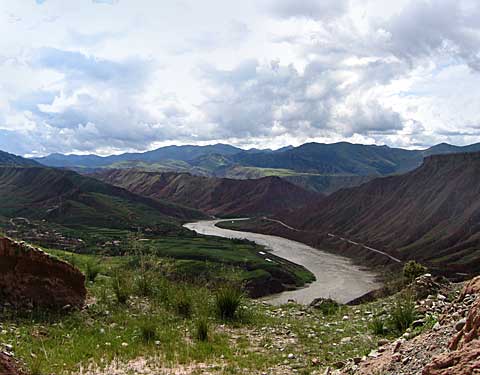
We encountered the Yellow River many times as we traveled around Golok. Over the last ten years, the amount of water in this river has dropped by 25%. Most scientists agree that global warming is the cause of diminishing ice-fields which in turn impact the supply of water in the rivers.
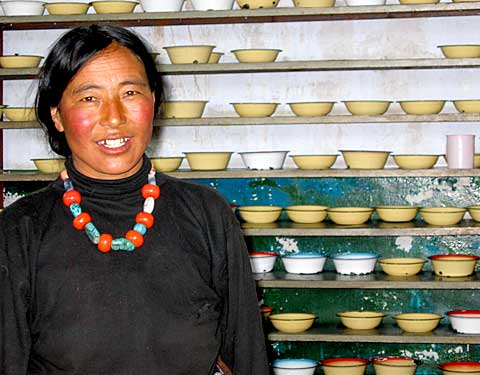
This woman worked in the kitchen of a Tibetan middle school. There is one Tibetan middle school for each of Golok's six counties, and graduates attend the Capital City Tibetan High School in Dawu, home of Kunsel Kyetsal. That high school serves all of Golok.
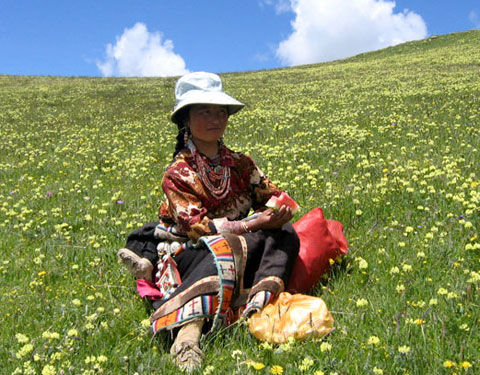
In stark contrast to the frozen landscape and deep snow drifts of winter, spring and summer bring lush fields of grass and wildflowers. The transformation begins soon after the sun first touches the surface of the soil. Here, a young woman relaxes on a hillside in full bloom.
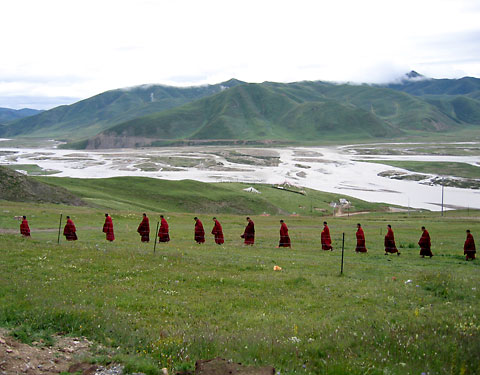
Monks of Bayan Monastery are walking down the dirt road in the direction of two large prayer wheels built to keep turning out prayers for the happiness of all beings. Bayan Monastery is situated at an elevation of approx. 13,500 feet.
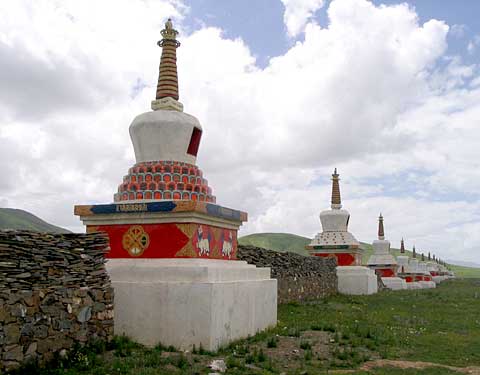
These stupas were constructed to fulfill the vision of one of this era's most-revered Buddhist teachers, a master who lived in Tibet. They line the road to a school and temple built on the site of the legendary king Gesar's palace. Buddhists believe that building a stupa can bring peace.
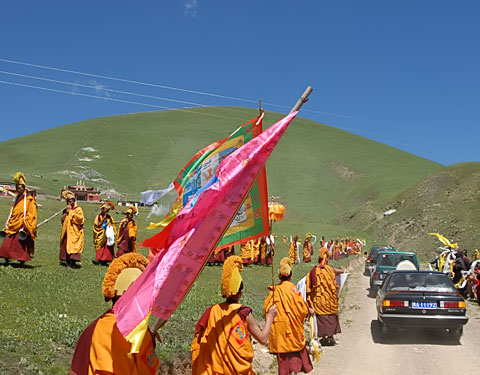
In 2007, Sogan Rinpoche returned to his monastery, Bayan, after many years abroad. He was met with traditional ceremonial fanfare, and exuberant monks rejoicing at the return of their cherished teacher.
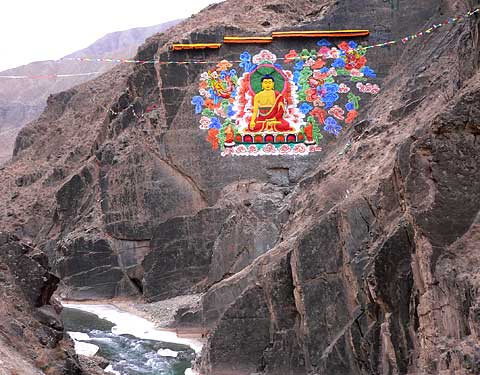
This portrayal of Buddha is a dramatic example of the "earth art" found in every area of Tibet. Born of the sincere wish that all beings be happy, these works are not only examples of the deeply spiritual nature of the Tibetan people, but also of their abundant creativity and technical skill.
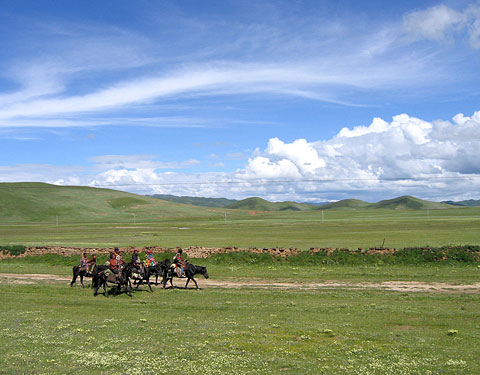
The Golok prefecture is high in altitude, boundless in size and inhabited by one of the most unique cultures in the world. To cross the expansive lands, some of the fortunate locals travel by horseback.
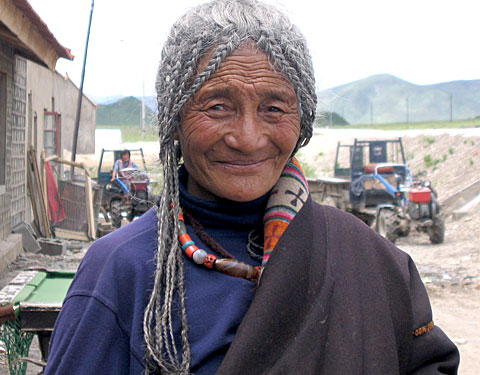
This pleasant woman greeted us as we entered her small Golok village. The scene behind her represents recent "improvements" to the traditional lifestyle - smoke spewing tractors at times replace yaks to transport goods, and a pool table provides entertainment and distraction for the young people.
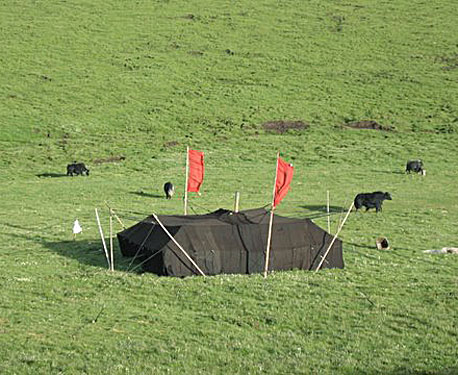
Traditionally, large extended families live together in big, black yak-hair tents, but these tents are found less often now. A great deal of skill is needed to weave and sew them, and they are extraordinarily heavy. Held up by many ropes and poles, they withstand the fierce winds of the Tibetan climate. Today, many nomads substitute white, canvas tents.
More Slideshows
About Golok, Part I
Kunsel Kyetsal - Construction history, the timeline in photos
Kunsel Kyetsal - Inaugural festivities, August, 2007
Kunsel Kyetsal - Inaugural II, more from TSF's visit to Tibet in the summer of 2007
Kunsel Kyetsal - Year One, classes begin
Back to Photo Galleries